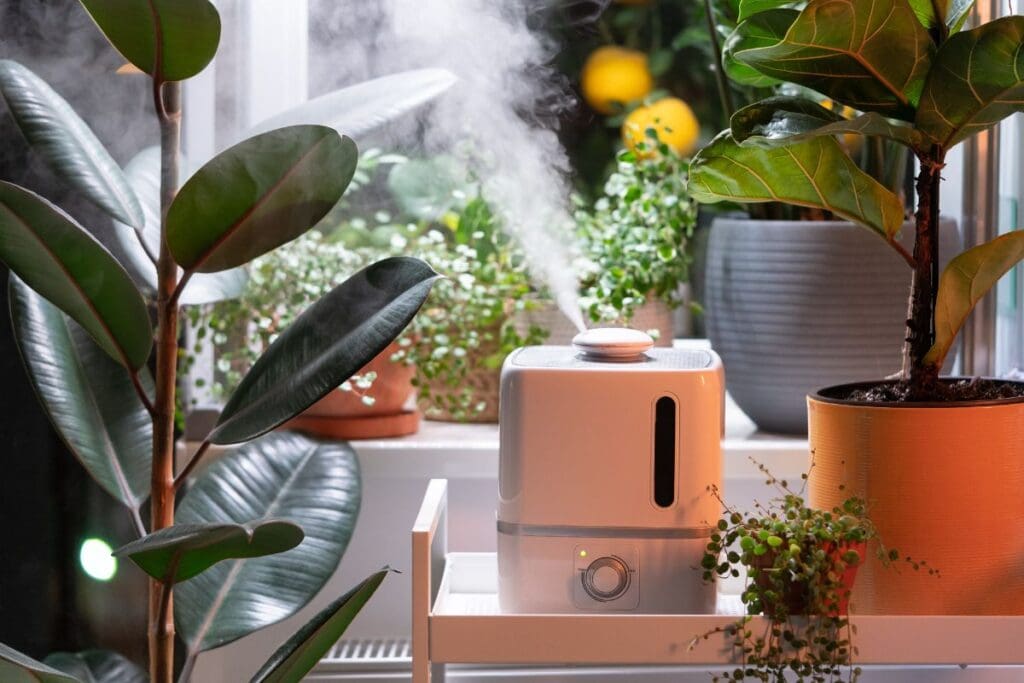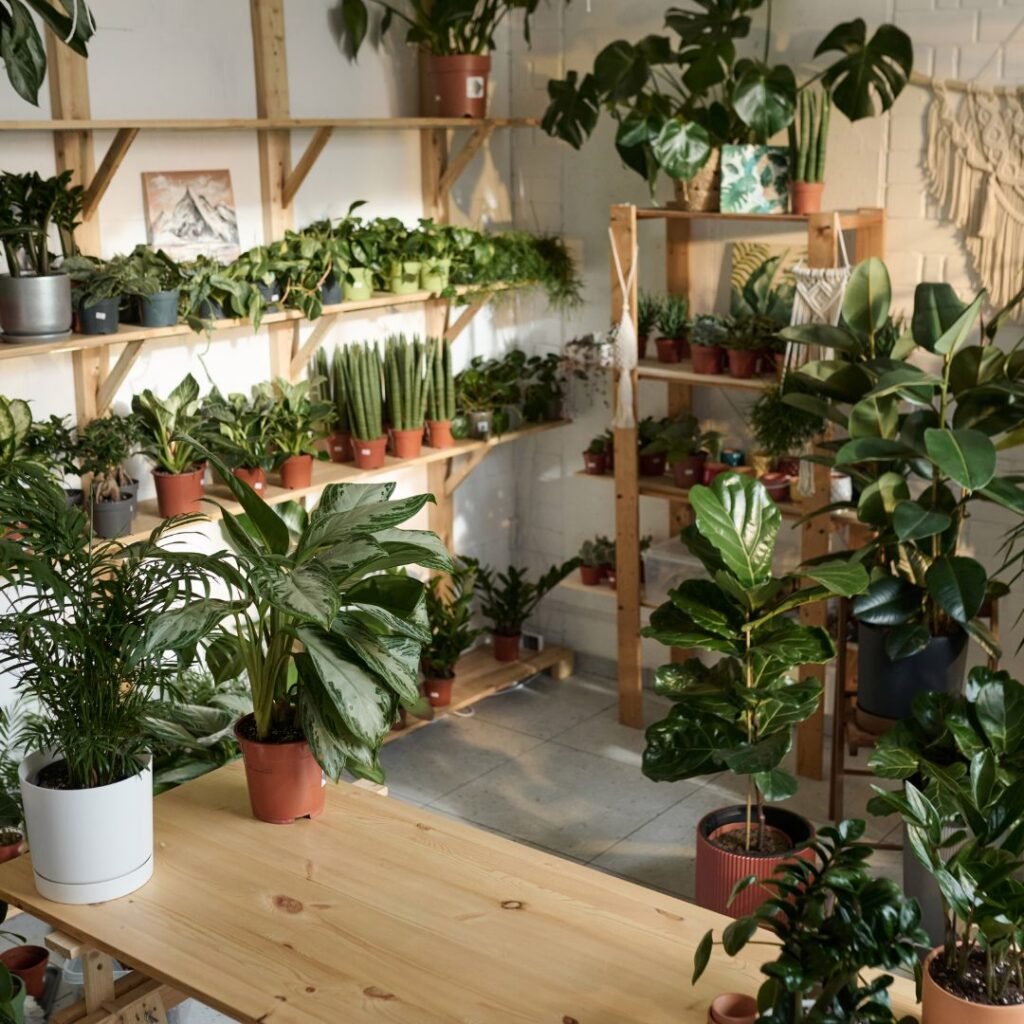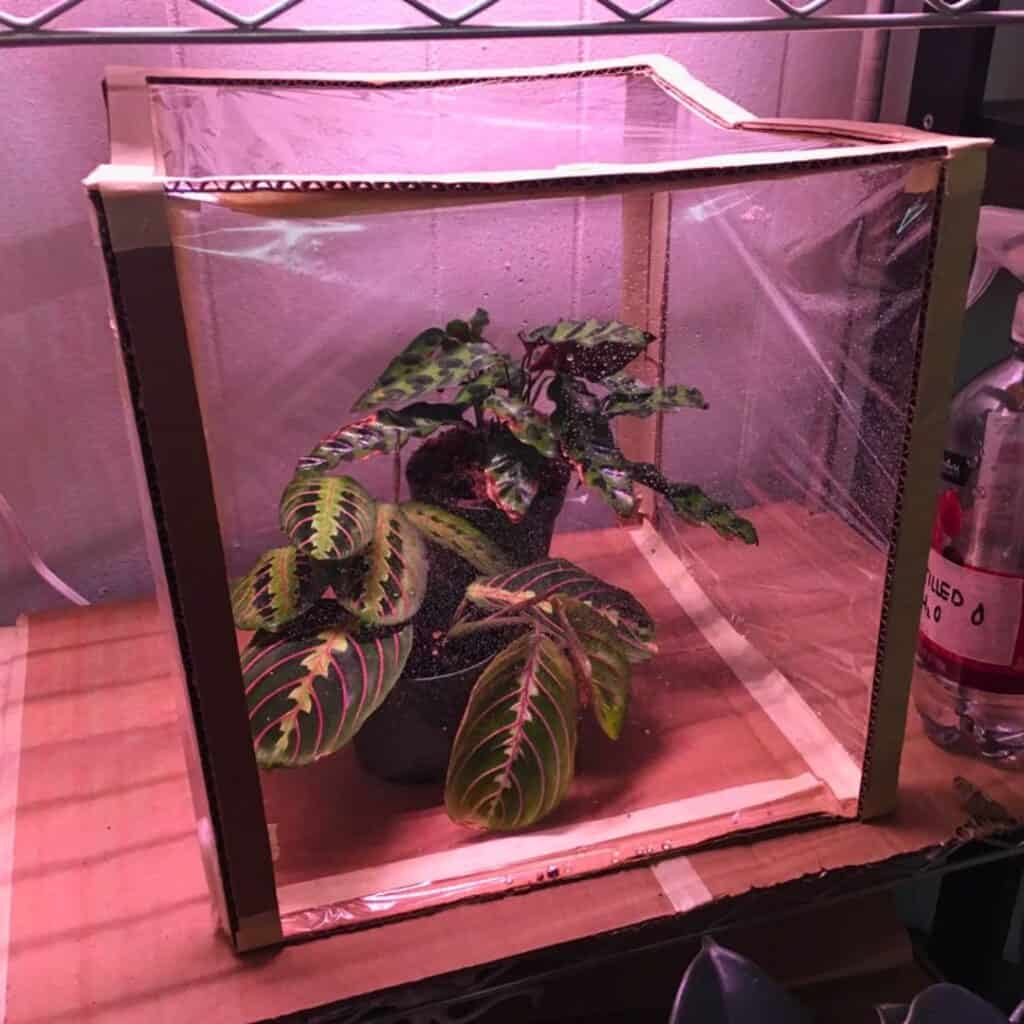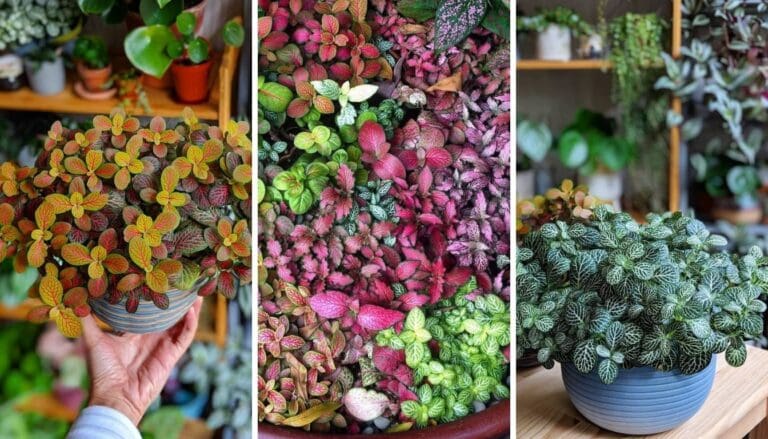5 Tips to Boost Humidity for Plants in Heated Rooms
Keeping plants happy in a heated room can be a real challenge, right? The warm air just dries everything out, and suddenly your beautiful green leaves start looking a bit sad.
The trick is to find simple ways to boost humidity indoors. It doesn’t have to be complicated.
Honestly, a few little tweaks can make all the difference. Once you get the hang of it, your plants will look healthier and grow better, even when the heat is blasting.
Let’s dive into some easy tips that actually work. I promise, you can start using these today.
Please note: Simplify Plants is reader-supported. As an Amazon Associate, I earn from qualifying purchases made by our readers with no extra cost added to you all! Some links in the post are affiliate links and I get a commission from purchases made through links in the post.
1) Place a humidifier near your plants

I like using a humidifier for steady moisture in the air. Heated rooms just get so dry, and plants really struggle with that.
A small humidifier set a few feet away from the plants works wonders. Too close, and you end up with soggy leaves and weird spots—nobody wants that.
I usually run mine during the day when the heat’s on. At night, I’ll turn it down or even off if the room feels okay.
Humidifiers come in all shapes and sizes. For just a couple of plants, a tiny tabletop model is fine, but if you’ve got a jungle going, a bigger one is the way to go.
I try to change the water often to keep things clean. It takes a minute, but it keeps the mist fresh and the machine happy.
2) Group plants together to create a micro-humidity zone

Placing plants close together is one of my favorite tricks. When one plant releases water, the others soak up that extra humidity.
This creates a cozy micro-humidity zone that helps everyone out. It’s honestly kind of cool how much of a difference it makes.
I stick to grouping plants with similar light and water preferences. That way, nobody gets annoyed or thirsty.
The closer they are, the better it works. I can actually feel the air is less dry around a little cluster of pots.
But I still leave a bit of space for airflow. Good airflow keeps mold away and leaves looking good.
This trick is especially nice for small plants like ferns or herbs. Even just a few pots on a shelf can help.
Plus, grouped plants always look way more lush and inviting.
3) Use a pebble tray filled with water under pots

A pebble tray is about as easy as it gets. All you need is a shallow tray, some pebbles, and a little water.
I set the pot on top of the pebbles, making sure it doesn’t touch the water. No one wants soggy roots.
As the water evaporates, it boosts humidity right around the plant. It’s a small, targeted fix.
I check the tray every few days. If it’s dry, I just add more water—simple.
This works best for small plants or little groupings. It’s cheap and gets the job done without any fancy gear.
4) Mist plants with water in the morning

I like to mist my plants in the morning for a quick humidity boost before the room heats up. The air gets drier as the day goes on, so it helps keep leaves fresh.
I use a spray bottle with a fine mist. Big drops just sit on the leaves and can cause spots or even mold, which is not what you want.
I’m careful to spray only the leaves, not the flowers. Some blooms are just too delicate for water.
Misting is a little daily habit for me, not a one-off fix. It really helps when the heater is running a lot.
Doing it in the morning gives leaves time to dry, which keeps problems away.
5) Cover plants with a clear plastic dome temporarily

Sometimes I use a clear plastic dome to trap moisture around my plants. It’s basically a mini greenhouse and gives plants a break from dry air.
I make sure the dome isn’t airtight. Plants need a bit of airflow, or things get weird fast—too much moisture and you risk mold.
I only leave the dome on for short stretches, like a few hours or maybe overnight. Any longer, and it’s just too much.
If I don’t have a dome handy, a clear plastic bag supported by sticks works for smaller plants. Not fancy, but it does the trick.
When I see condensation or the room feels less dry, I take the cover off. The goal is to help the plant, not smother it.
Why Humidity Matters for Indoor Plants
I notice my plants just do better when the air isn’t bone dry. Dry air can really mess with leaves, while the right humidity keeps them looking green and perky.
Effects of Dry Air on Plant Health
When the air gets too dry, I see brown leaf tips, curling edges, and slower growth. Plants lose water faster than they can soak it up, and it shows.
Dry air also seems to attract pests, especially spider mites. They love low humidity and can ruin a plant in no time. Keeping the air moist helps keep those critters away.
The soil can dry out unevenly, which is sneaky. The top looks fine, but the roots might be thirsty, and you end up second-guessing your watering.
I watch new growth for signs of stress. If new leaves are tiny or weak, it’s usually a hint that the air’s too dry.
Optimal Humidity Levels for Common Houseplants
Different plants, different needs. I keep a little chart handy:
| Plant Type | Ideal Humidity |
|---|---|
| Ferns | 60–70% |
| Orchids | 50–70% |
| Tropical Plants | 50–60% |
| Succulents/Cacti | 30–40% |
Most tropical houseplants are happiest between 40–60% humidity. Keeps them hydrated but doesn’t turn your place into a swamp.
If it drops below 30%, problems show up fast. Leaves dry out, flowers fade—just not good.
A digital hygrometer helps me stay on top of things. If the numbers dip, I know it’s time to do something.
Monitoring and Maintaining Humidity in Heated Rooms
I keep an eye on air moisture and tweak my heating setup as needed. It’s amazing how much these small steps help.
How to Measure Humidity Accurately
I use a digital hygrometer for quick, reliable readings. Analog ones are okay, but digital just feels easier.
I put it near my plants but not in direct sunlight. Sun or heat vents can mess with the numbers.
I check at the same times each day. If humidity drops below 40%, I know it’s time to add moisture.
Some hygrometers keep track of highs and lows over 24 hours. That’s handy for seeing how much the air changes when the heater’s on at night.
Adjusting Your Heating System to Support Plants
I don’t turn off the heat, but I do try to keep the thermostat steady. Big temperature swings just dry the air out.
Plants don’t like sitting right by heat vents or radiators. I move them away so the leaves don’t get blasted.
If things still feel dry, I’ll add a humidifier or set a tray of water near the heater. The evaporating water gives the air a little boost.
These tweaks really do help plants handle heated rooms better.
Frequently Asked Questions
People ask me all the time how I keep plants happy in heated rooms. Honestly, it’s a mix of adding water, using a few tools, and just watching the leaves.
What are some easy ways to increase humidity for my indoor plants?
I like to group my plants together so they share moisture. A pebble tray with water under the pots is another simple fix.
Can misting my plants help improve the humidity levels?
Yep, but I only mist in the morning. That way, leaves dry out during the day and don’t get moldy.
What kind of humidifier is best for a plant-filled room?
I go for a cool mist humidifier. It keeps the air moist without making things warmer, and covers a good area.
How can I tell if my plants are getting enough humidity?
I check the leaves. If they’re brown at the edges or curling, the air’s too dry. Healthy leaves are soft and green.
Are there any DIY methods to create a more humid environment for plants?
Sometimes I cover small plants with a clear plastic dome for a bit. It traps moisture and makes a mini greenhouse effect.
How often should I check and adjust the humidity for my plants?
I usually check on my plants every few days, especially when the heat’s running. If I spot dry soil or crispy leaves, that’s my cue to bump up the moisture—no hesitation.
Recommended Garden Supplies
| Product Image | Our Recommended Gardening Supplies | Check Offers! |
|---|---|---|
Top Top
Top
Top
Top
Top
Top
Top
Top | rePotme Houseplant and Tropical Classic Potting Soil Mix | Check Offer On Amazon |
 Top
Top
Top
Top
Top
Top
Top
Top | Espoma Organic Indoor Plant Food | Check Offer On Amazon |
 Top
Top
Top
Top
Top
Top
Top
Top | GooingTop LED Grow Light 6000K Full Spectrum Clip Plant Growing Lamp | Check Offer On Amazon |
 Top
Top
Top
Top
Top
Top
Top
Top | Soil Moisture Meter | Check Offer On Amazon |
 Top
Top
Top
Top
Top
Top
Top
Top | Govee Hygrometer Thermometer, Bluetooth Enabled! | Check Offer On Amazon |
 Top
Top | LEVOIT Humidifiers for Large Room(Best For Plants) | Check Offer On Amazon |
 Top
Top
Top
Top
Top
Top
Top
Top | Upgraded DIY Automatic Drip Irrigation Kit, 15 Potted Houseplants Support | Check Offer On Amazon |
 Top
Top
Top
Top
Top
Top
Top
Top | Stainless Steel Heavy Duty Gardening Tool Set | Check Offer On Amazon |
 Top
Top
Top
Top
Top
Top
Top
Top | Bonide Insecticidal Soap | Check Offer On Amazon |
 Top
Top
Top
Top
Top
Top
Top
Top | Bonide 32 oz Spray Neem Oil for Organic Gardening | Check Offer On Amazon |
 Top
Top
Top
Top
Top
Top
Top
Top | Garden Safe Fungicide | Check Offer On Amazon |






